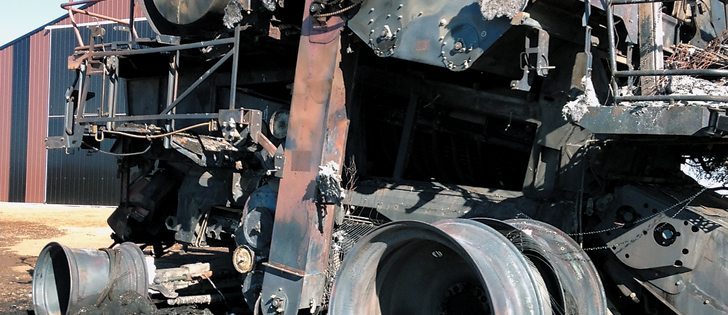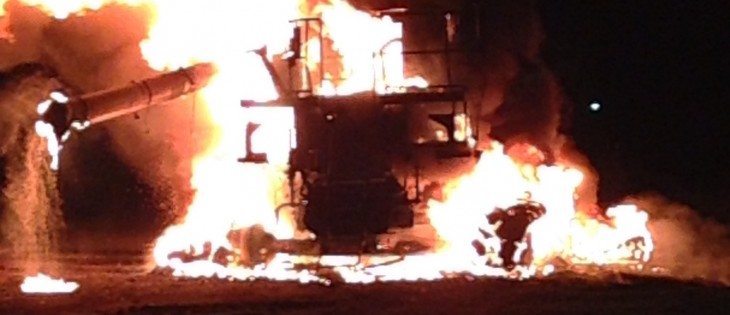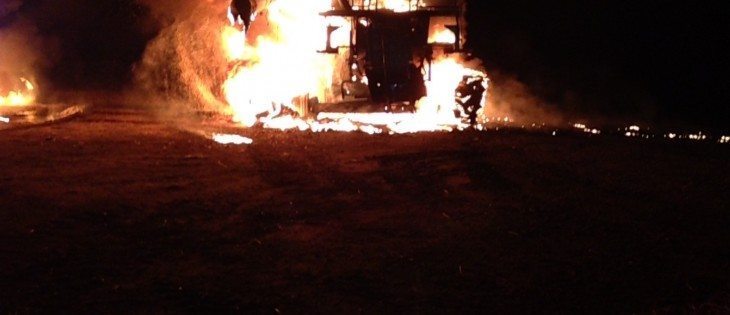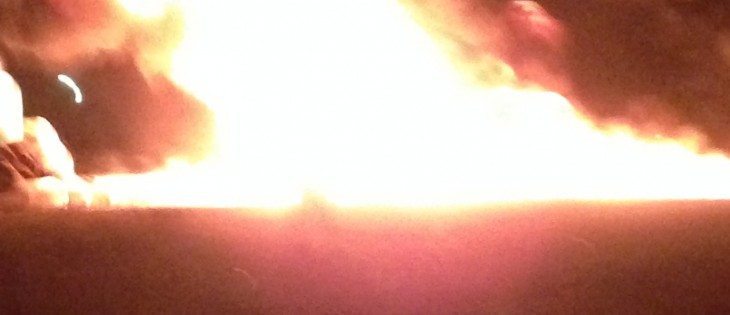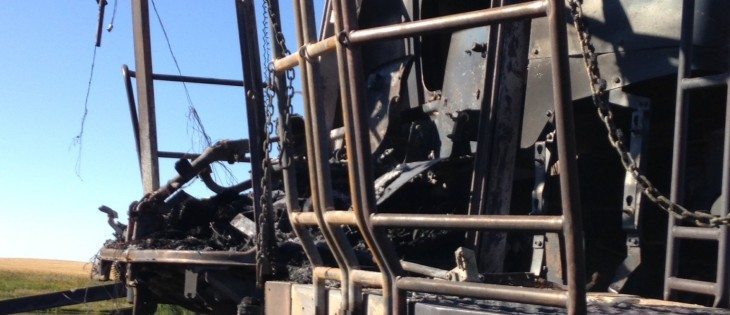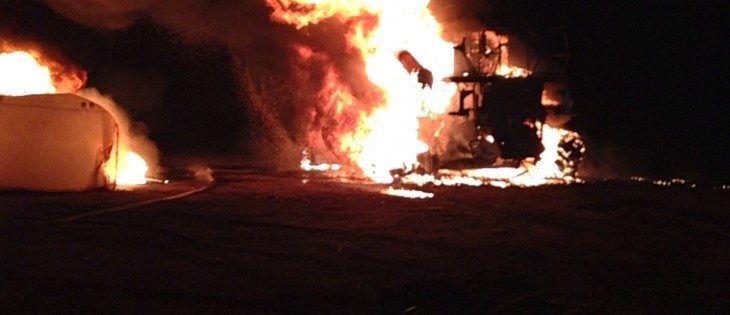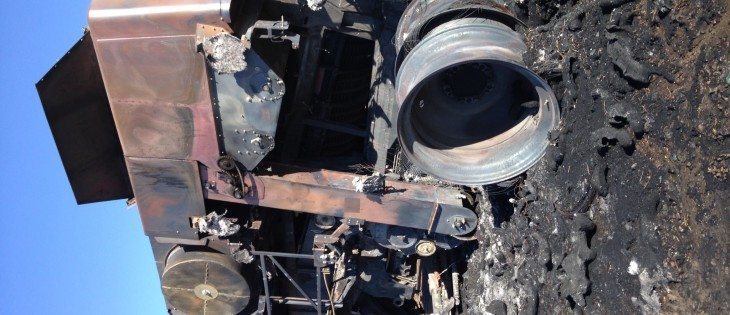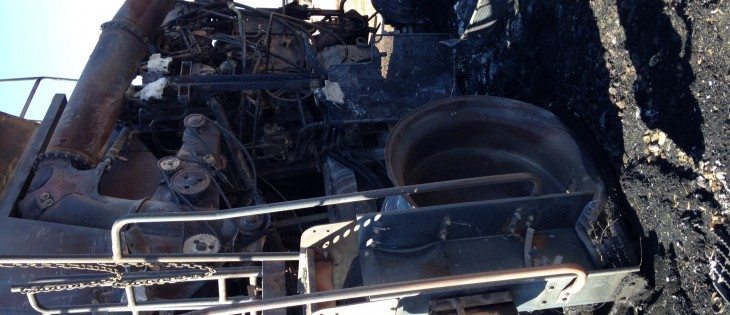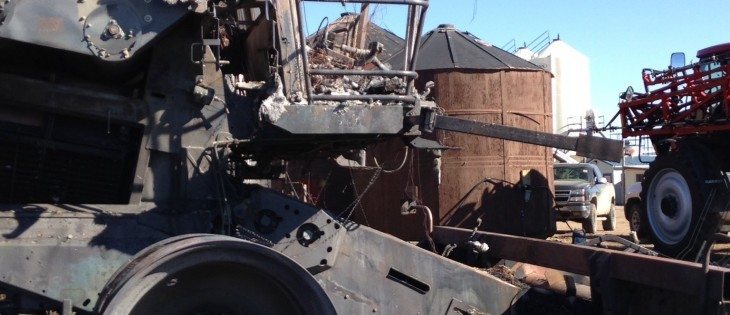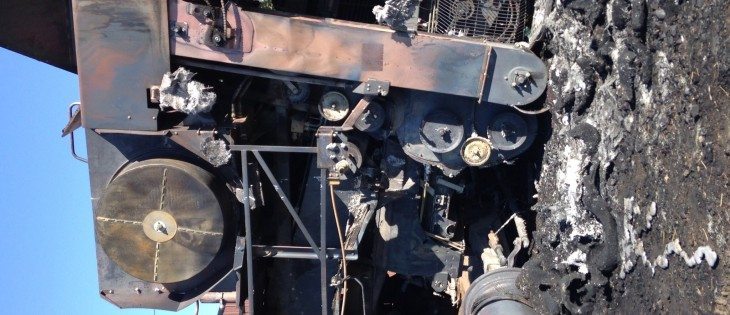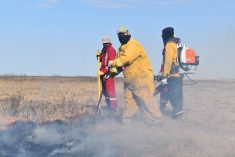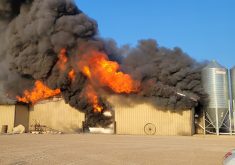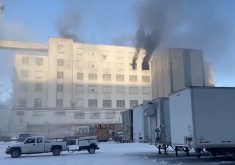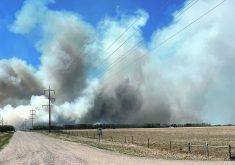Read Also

U.S. government investigates high input costs
The USDA and DOJ are investigating high input costs, but nothing is happening in Canada.
Zimmer was combine shopping last week after his old one blew up.
The fiery scene, which occurred in the Zimmer family’s farmyard near Major, Sask., Sept. 6., destroyed the machine with flames and explosions hot enough to melt aluminum.
“It was a close call.… The flames were probably 50 feet in the air,” Zimmer said. “How the hell do you get that kind of a flame when you’re working with mostly steel, right?”
Zimmer, 57, was combining canola around 8:30 p.m. when the incident began. He was working in a field slightly more than three kilometres from the family’s home with his 25-year-old son, Brandon.
“(The) combine just got warm. There was a lot of red ash that was showing on it, of course,” said Zimmer, who farms 4,000 acres.
After using a fire extinguisher on the machine in the field, Zimmer headed back to the yard to prepare a water tank while Brandon drove the 2011 Case IH 8120 combine.
“(A neighbour) was combining besides us and he could see the red glow as we were driving it,” Zimmer said. “My son couldn’t, of course … so he jumped in his truck and followed us. He knew there was going to be a problem.”
Zimmer said he could see flames once the combine arrived in the yard. Brandon hopped out after parking it, and a few seconds later, it exploded.
“It rocked the combine, and they’re a heavy combine, right. It kind of bounced the back end,” said Zimmer.
“It was a massive boom. People heard it from a mile away, even.”
Smaller explosions followed, which Zimmer likened to the sound of shotguns.
“That was an unbelievable, hot fire,” he said.
He said he’s experienced fires in the field before, but was unsure how this one started or why it was so large.
Regular cleaning and maintenance of equipment are recommended to reduce the chances of fire, with special attention paid to the machine’s cooling system and removing crop residue.
Nobody was hurt in the incident. Late last week, Zimmer was awaiting the arrival of a new machine, which he expected Sept. 12.
With 3,500 acres left, Zimmer was optimistic about the remaining harvest. His area received rain Sept. 8 but dodged the snow and frost seen west of the Saskatchewan border.
“Pretty darn good, I think. We did our peas and they were 40, 45 (bushels per acre). (We) just started on the canola and it looked like close to around 40 (bu. per acre) maybe.”

